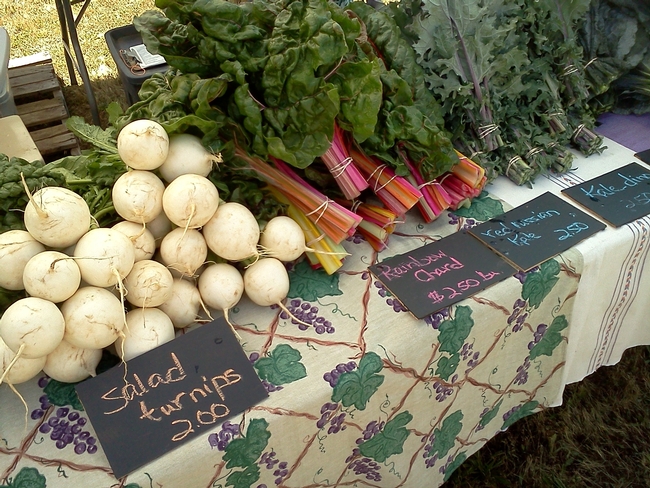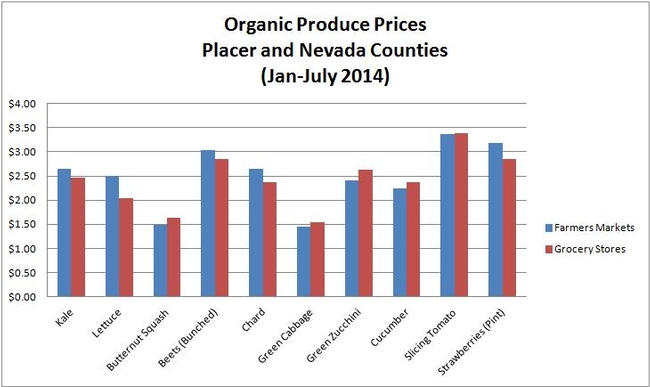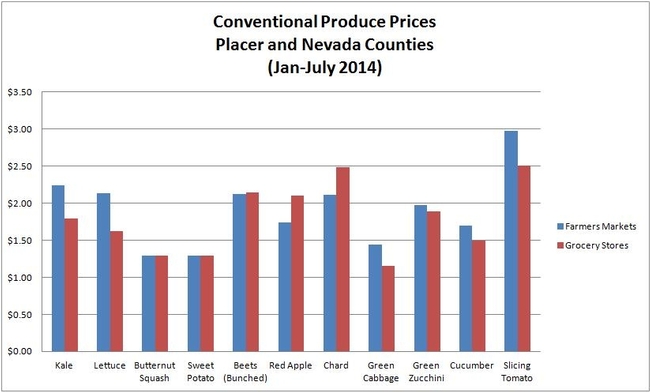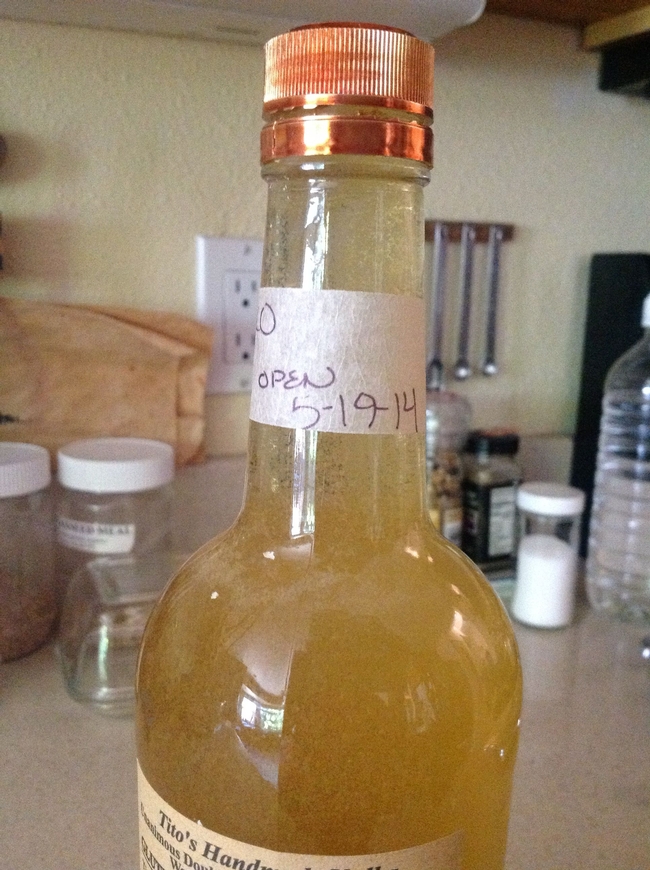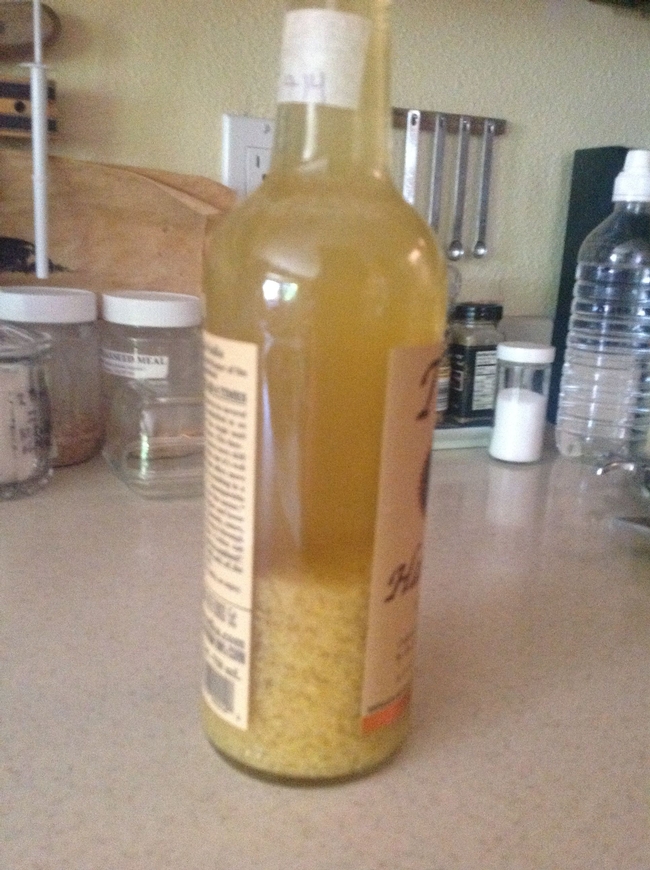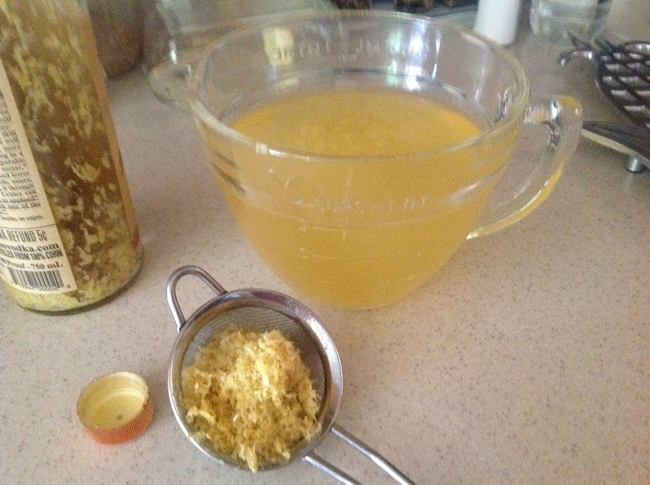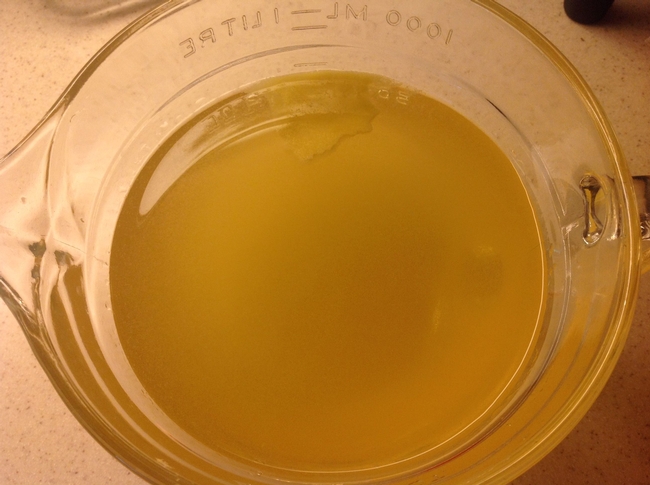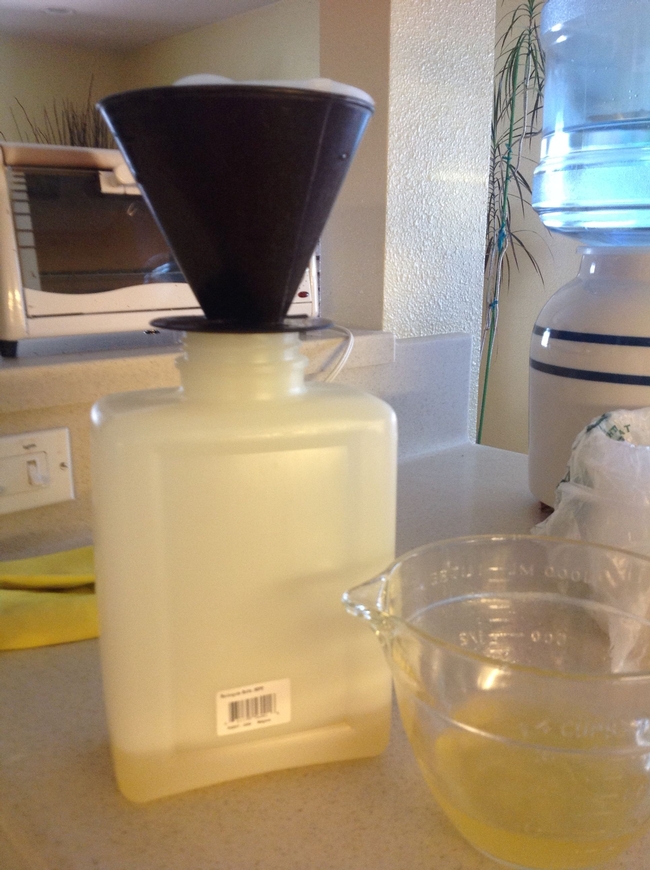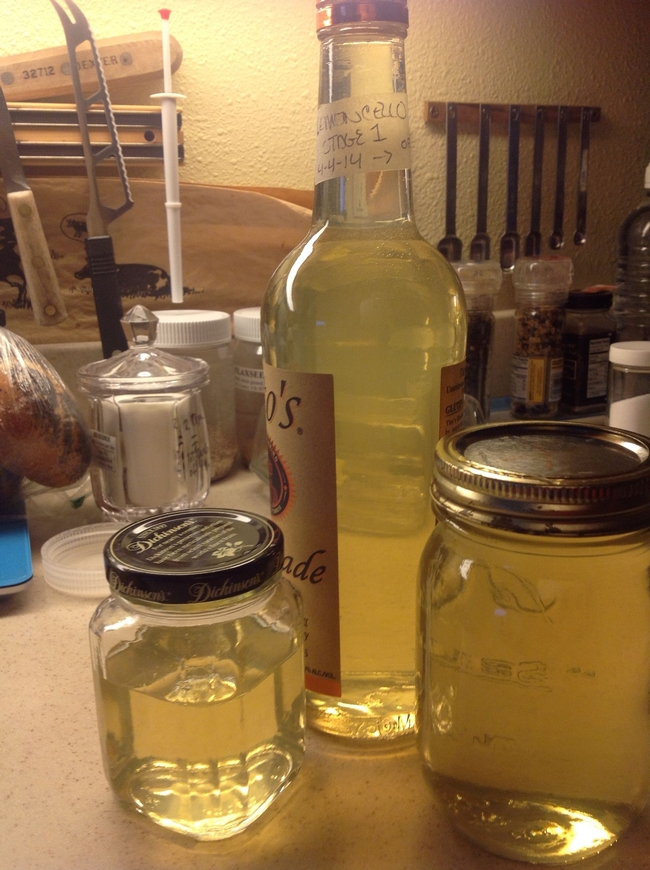UC Food and Agriculture Blogs
Farmers market prices compare well with the supermarket produce aisle
Many shoppers believe they can buy cheaper produce at supermarkets than at local farmers markets. A new UC Cooperative Extension study dispels that common misperception.
In Placer and Nevada counties, UCCE received a CDFA Specialty Block Grant to encourage consumers to eat more fruits and vegetables and support the local agricultural industry by buying the produce from them. The project led to the creation of the “Eat Local Placer Nevada” campaign.
“Buying locally grown products supports local farmers and ranchers and it keeps land in agriculture,” said Cindy Fake, UCCE farm advisor in Placer and Nevada counties. “Simply put, it's the right thing to do.”
To give consumers extra incentive to eat local, the group launched a seven-month study to compare prices at farmers markets and grocery stores. Volunteers and staff collected price data at four farmers markets and six grocery stores from January to July 2014. Specials and sale items were not part of the study. The data suggests that organic produce at farmers markets is priced about the same as organic produce at grocery stores.
In terms of conventional produce, grocery stores had cheaper prices on 6 out of 11 items; however, consumers would still save money picking up red apples, beets and chard at the farmers markets. The cost of conventional butternut squash and sweet potatoes was virtually equal at the two venues.
“Contrary to many consumers' perception, farmers market prices are competitive with regular supermarket prices,” Fake said. “Some prices are slightly higher, some slightly lower, but they are in the same range. “
However, there are other factors shoppers should keep in mind when deciding to buy supermarket produce or fruit and vegetables grown by their neighboring farmers.
“Produce at the farmers market is sold the same day or the day after it is harvested,” Fake said. “Because of that, its shelf life is two to three times longer than what is found in the supermarket. And because it is so fresh, you have a higher nutrient content and it will taste better.”
Fake said experts believe buying local also supports the local economy. She is collaborating on a project led by Shermain Hardesty, UCCE specialist in the Department of Agricultural and Resource Economics at UC Davis, to document the economic impact of local food systems in Placer, El Dorado, Sacramento and Yolo counties. The researchers will gather data about farmers' purchases of inputs and local sales of produce.
“This project will provide science-based evidence to guide public policy and program design aimed at supporting local farmers and local food systems into the future,” Fake said.
The study – titled Measuring the Impact of Local Food Marketing on the Local Economy – is supported with a $226,048 grant from the UC Division of Agriculture and Natural Resources.
Sighting swarming termites?
After the subterranean termite, the western drywood termite, Incisitermes minor, is California's second most important termite pest. Drywood termites are difficult to detect. They live deep inside wood and except during periods when they swarm or when...
Are Farmers' Market Prices Really More Expensive?
Are Farmers' Market Prices Really More Expensive? That was one of the questions we set out to explore this year with the Eat Local Placer-Nevada project. Why are we concerned about cost when it comes to local produce? One of the goals of the Eat Local...
About that lemoncello
One of the hazards of contributing to a shared blog, is that one forgets to post. So in this case, while I said in my last post that we would re-visit the lemoncello in mid-May, here it is September. Time flies.
The lemoncello is a huge success, we've been enjoying it on the hot summer afternoons that are plentiful in Davis. And here's how I got from pith to pleasure . . . .
The first steps in the lemoncello process were documented in this early Spring post. The recipe calls for 6 weeks of steeping the lemon zest in the alcohol in a cool, dark place; preferably, in a place where it won't be disturbed. I had placed mine in a place so cool, dark, and undisturbed it took me 45 minutes to find it.
But that resolved, I moved to the next step - filtering.
You can see that the zest from all of those lemons has settled to the bottom of the bottle. Lemoncello aficionados recommend a 2-step filtering process. The first step is to get most of the zest out using a fine sieve.
Look at all of this zest!
Quite a bit of solid material is left in the liquid after this process.
To remove these last solids, the liquid is filtered through a paper coffee filter. (Lemoncello purists, like coffee purists, would object to the use of a paper filter, saying it imparts a paper flavor.)
The next step is to add the cooled simple syrup. The basic simple syrup recipe calls for equal parts of sugar and water, but for lemoncello less sugar is used. For one 750ml bottle of base alcohol, you need 2-1/2 cups of water and 1-3/4 cups sugar. Add the sugar to the water in a medium saucepan and heat over medium heat. Bring to a gentle boil, stirring constantly, until the sugar is dissolved. Let the mixture cool completely to room temperature before adding to the lemoncello base.
Decant the mixture, and put in a cool, dark place for another 45 days. The addition of the simple syrup increases the volume, so you can't fit your mixture into the original bottle.
This mixture was moved into two tall glass bottles and set aside until early July.
You can put the finished lemoncello in the freezer or in the refrigerator. Enjoy it alone or in a cocktail on a hot summer afternoon when you need a little something refreshing!
If you want to make your own lemoncello, an excellent resource is the blog LemoncelloQuest.
Scale Insects: Recognizing and Managing
People sometimes don't recognize scales as insects, but understanding scale types and signs of their presence will enable you to best manage them if encountered on your plants. Scale insects are circular, elongate, or oval insects that often resemble...



